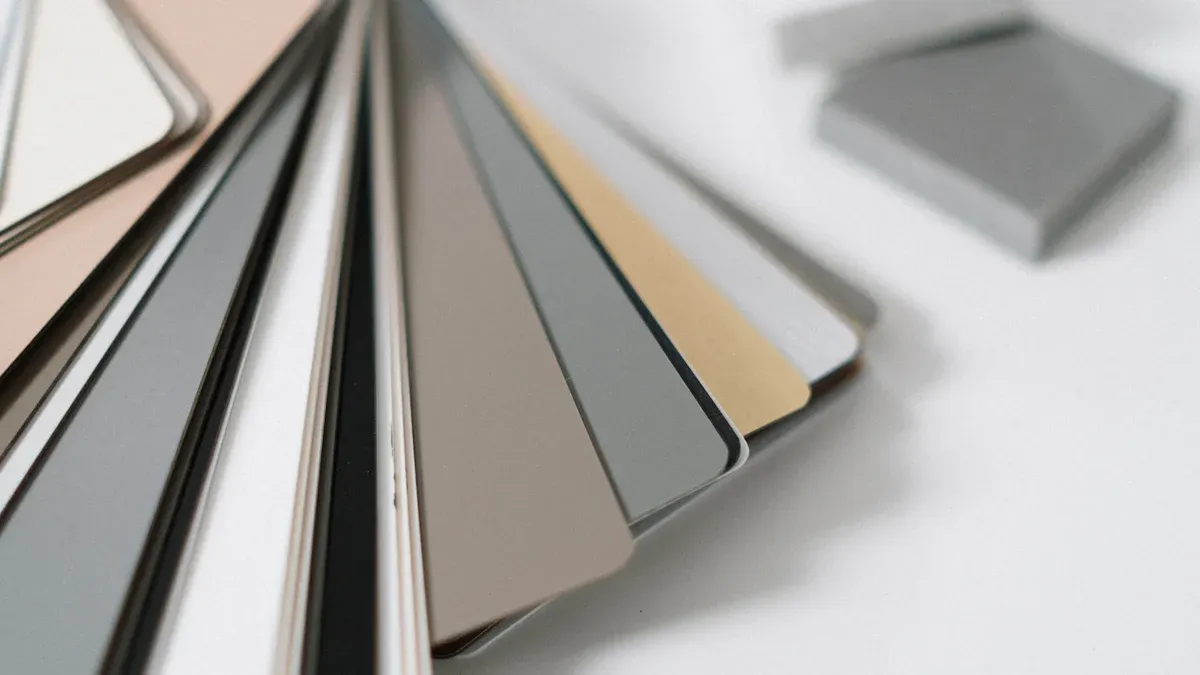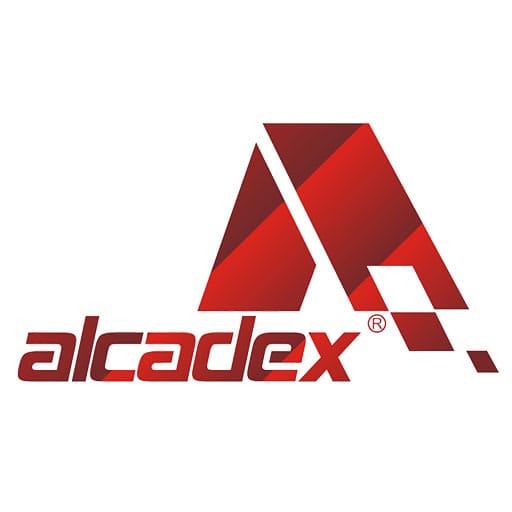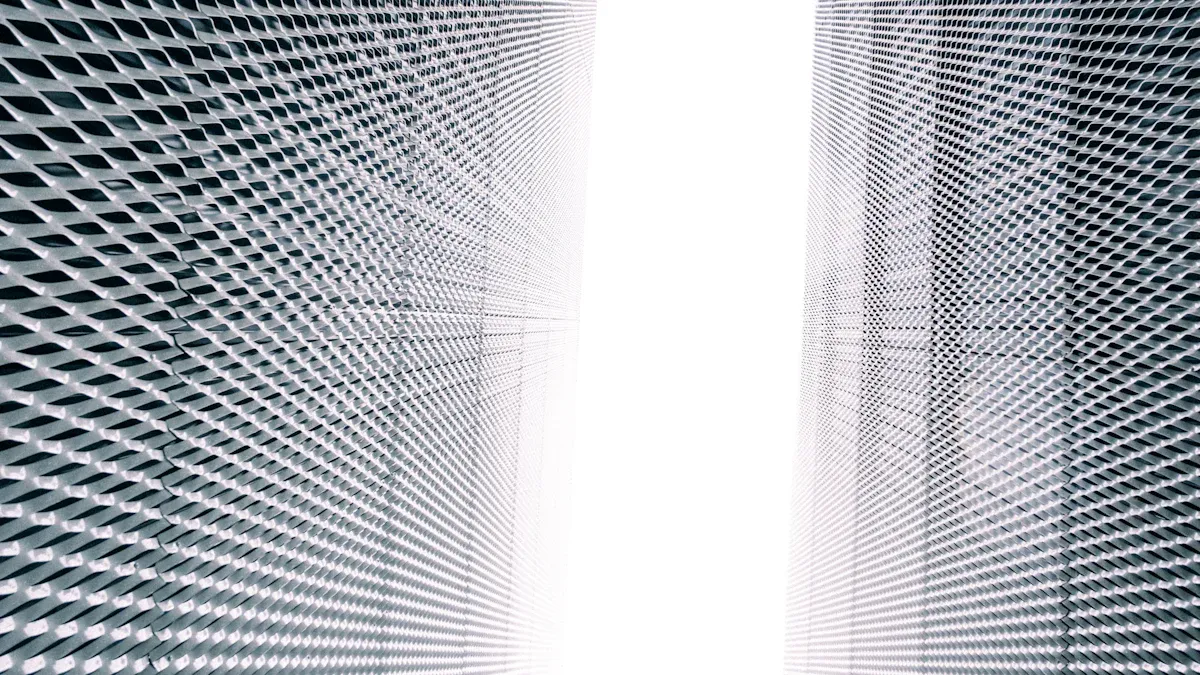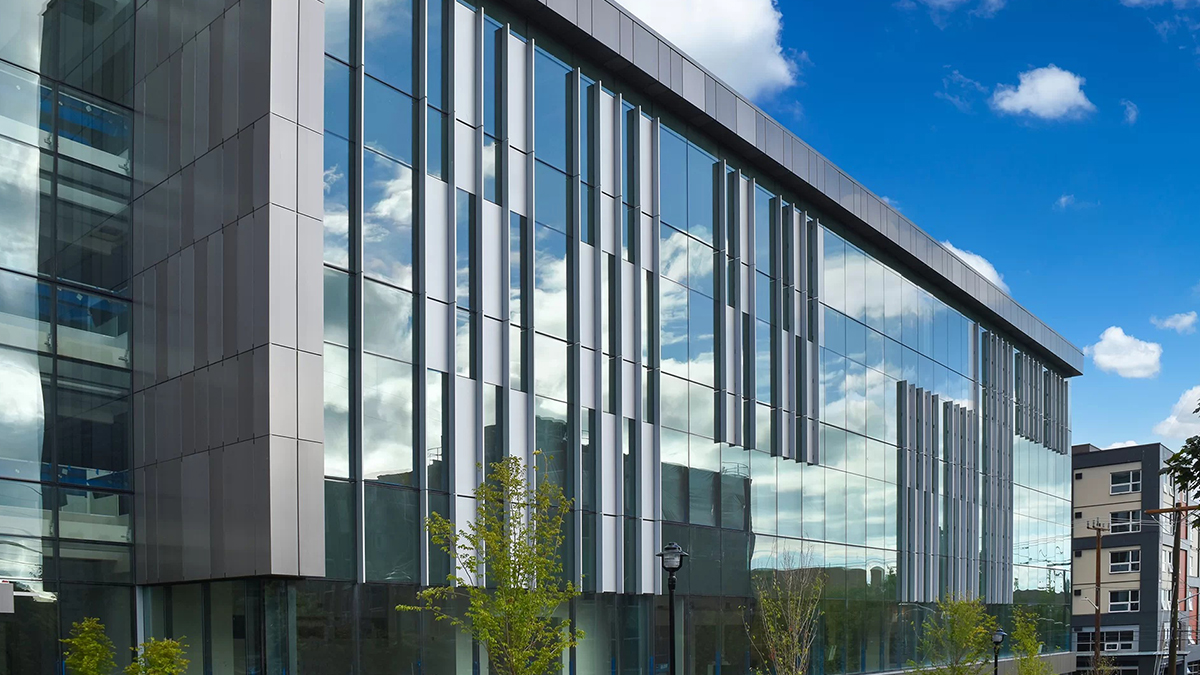
26 Oct Anodized Aluminium Composite Panel VS PVDF Aluminium Composite Panel
Table of Contents
- 1 Key Takeaways
- 2 Comparison Overview
- 3 Durability
- 4 Color Options
- 5 Environmental Resistance
- 6 Maintenance
- 7 Cost and Value
- 8 Selection Guide
- 9 FAQ
- 9.1 What is anodising and how does it help aluminium panels?
- 9.2 How does pvdf coating compare to anodising for aluminium panel protection?
- 9.3 Can you use anodising on all types of aluminium panels?
- 9.4 Why do architects choose pvdf for aluminium panel projects?
- 9.5 How often should you clean anodised aluminium panels?
Choosing the right aluminum composite panel is important. It can help your project do well. You want it to last long, look nice, and be worth the money. Architects and builders care most about how long it lasts, how it looks, and its value. The building market is growing for both kinds of panels. PVDF coatings make more money than others. Here is a quick look at the world market:
Statistic | Value |
|---|---|
USD 6,468.1 million | |
Projected size (2030) | USD 9,648.0 million |
CAGR (2025-2030) | 7.0% |
Both anodized aluminium composite panels and PVDF-coated panels are strong. You should pick the one that fits your project best.
Key Takeaways
Anodized panels look shiny and modern. They are great for busy places. These panels do not rust. They stay looking nice for many years. You do not need to clean them often.
PVDF panels come in many colors and finishes. They are good for projects that need bright looks. These panels do not fade easily. They can handle bad weather for over 20 years.
Think about where you will use the panels. Anodized panels work well in cities. PVDF panels are better for places with tough weather or near the ocean.
Both types are simple to clean. PVDF panels need less cleaning in dirty or sunny areas. This saves you time and work.
Look at your budget and what you need for the future. Anodized panels cost less at first. PVDF panels may be worth more later because they last longer and have better warranties.
Comparison Overview
Key Differences
When you look at anodized aluminum composite panels and PVDF aluminum composite panels, you can see they are different. Each one has its own good points for your project. The table below shows how they compare in important ways:
Feature | Anodized Aluminum Panels | PVDF Aluminum Panels |
|---|---|---|
Durability | Special layer for protection; does not rust | Hard, colorful cover; resistant to scratching and fading |
Maintenance | Low maintenance; retains shiny look for years | Easy to clean; maintains appearance with minimal effort |
Aesthetic Requirements | Good for modern styles and busy places | Available in many colors and finishes |
Anodized panels have a layer that keeps the metal safe. This layer stops rust and helps the panel last longer in busy spots. PVDF panels have a strong, colorful cover. This cover keeps away scratches and fading, so the panels look nice for a long time. Both types are easy to clean. Anodized panels stay shiny for years with little work. PVDF panels also stay bright and fresh with simple cleaning.
For style, anodized panels look good with modern designs. They are best when you want a clean and shiny look. PVDF panels come in many colors and textures. You can match them to almost any style.
Choosing the Right Panel
Pick your panel based on what your project needs. If you want a modern look and need something strong for a busy place, anodized panels are a good pick. You often see them on building outsides, storefronts, curtain walls, and roofs. People also use them for appliances, vents, awnings, lights, and window frames. They are used in display cases, grills, furniture, and even car parts.
If you want more color choices or need panels that do not scratch or fade, PVDF panels are a smart pick. They are good for projects where you want bright colors or special looks. Both types are easy to care for and last a long time. Think about where you will use the panels and what look you want. This will help you choose the best panel for your project.
Durability
 Anodized Aluminium Composite Panel
Anodized Aluminium Composite Panel
Anodized aluminium composite panel is strong in busy places. The anodized layer makes a hard shield on the outside. This shield helps stop rust and keeps the panel safe for many years. People use these panels on building outsides and storefronts. They are also good for places with lots of people walking by. These panels have worked well since the 1930s. Some buildings still have them after 70 years, and they look good.
Here are some facts about anodized aluminium composite panel in busy areas:
Anodized coatings help stop rust and damage from weather.
Good anodized aluminium composite panel can last 20-30 years or more.
The surface can get scratched or chipped if hit a lot.
You cannot fix the anodized layer where it is. You must put in a new panel.
Anodized aluminium panel comes in a few colors like bronze, clear, black, and champagne. The finish stays shiny for a long time, but you do not get many color choices. The warranty for these panels is usually 5–10 years. If you want a panel that is tough and keeps looking nice, anodized aluminium composite panel is a good pick.
Panel Type | Lifespan (Years) |
|---|---|
Anodized Aluminum Composite | N/A |
Failure Mode | Anodized Aluminum |
|---|---|
Corrosion | Can get rust from air or other metals if not protected well. |
Repairability | You cannot fix it where it is; you must replace it. |
Warranty | Usually has a 5–10 year warranty. |
Cost Over Time | Costs less at first but may cost more later if you need to replace panels. |
Aesthetic Options | Only a few color choices (bronze, clear, black, champagne). |
PVDF Coatings
PVDF coatings give a different kind of strength. These panels are best for outside and tough places. The coating keeps the surface safe from acids, cleaners, and bases. You can use PVDF-coated panels where there is strong sun, rain, or pollution. The panels keep their color and shine for over 30 years, even in hard weather.
PVDF coatings can handle boiling water for two hours and do not peel. The panels also block UV rays and nuclear radiation. You can fix some damage to PVDF panels, so you do not always need to buy new ones. The warranty for PVDF panels is often 10–20 years.
Here are some things about PVDF coatings:
The coating stands up to salt, chemicals, and dirty air.
PVDF panels last more than 20 years outside.
They pass a salt spray test for 3000 hours.
They work in temperatures from -60 ℃ to 150 ℃.
You can pick from many colors for your project.
Panel Type | Lifespan (Years) |
|---|---|
PVDF Aluminum Composite |
Failure Mode | PVDF Panels |
|---|---|
Corrosion | Not likely to rust if the coating is done right. |
Repairability | You can fix some problems. |
Warranty | Usually has a 10- to 20-year warranty. |
Cost Over Time | Costs more at first but less later because you do not need to replace as often. |
Aesthetic Options | Many color choices are available. |
Tip: If you need panels for places with strong weather or chemicals, PVDF coatings protect better and last longer.
When you look at anodized aluminium composite panel and PVDF coatings, you see each one is good for different things. Anodized panels are best for busy places and stay shiny for many years. PVDF coatings are great for tough weather and give you more color choices. Think about where you will use the panels and what kind of safety you need.
Color Options
Anodized Panel Appearance
Anodized aluminum composite panels look modern and clean. They have a shiny, metallic surface. This shine works well on city buildings. The anodizing process makes the surface smooth and hard. The color stays for many years. You often see these panels in bronze, black, champagne, or clear. The color is part of the metal, so it will not peel or flake.
Anodized panels do not come in many colors. Most people use them for a classic or industrial style. The finish stays bright and does not fade fast, even in sunlight. This makes anodized panels a good pick for aluminum façades that need to look nice for a long time.
Color Type | Description |
|---|---|
Standard Colors | Bronze, black, champagne, clear |
Finish | Metallic, matte, or gloss |
Color Retention | Excellent, does not peel or flake |
Note: Anodized panels stay shiny for years, but you cannot choose as many colors as with other panels.
PVDF Coatings Variety
PVDF-coated panels give you many more color and finish choices. You can pick from over 45 factory colors. You can also choose custom shades with the RAL color system. PVDF panels come in finishes like solid, metallic, pearlescent, and special effects. Some effects are prismatic or brushed. This lets you match almost any style you want for façades.
Color Type | Description |
|---|---|
Standard Colors | 45+ factory colors |
Custom Colors | RAL system or custom chart |
Finishes | Solid, metallic, pearlescent, matte, gloss |
Special Effects | Timber, stone, weathered, zinc, prismatic |
PVDF coatings keep their color bright for up to 20 years. These panels do not fade, even in tough weather. Your façades will look new for a long time.
PVDF coatings keep color bright for up to 20 years.
Marble ACP sheets with PVDF coatings block UV and keep color for at least 15 years.
PE coatings fade fast, but PVDF panels stay bright.
If you want more color choices and lasting color for your aluminum façades, PVDF-coated panels are the best option.
Environmental Resistance
 Weather and Corrosion
Weather and Corrosion
You want your building to stay strong in all weather. Both anodized and PVDF aluminum composite panels help with this. Anodized panels have a special oxide layer. This layer covers the surface and keeps out water, salt, and dirt. These panels work well in places with lots of rain or wind. The hard surface also stops scratches and damage from daily use.
PVDF panels have a tough coating that blocks bad weather. The PVDF layer protects the panel from rain, snow, and salty air. You can use these panels in cities near the ocean or in busy factories. They do not rust or lose their color. The table below shows how each panel type works in tough places:
Panel Type | Weather Resistance | Corrosion Resistance | Best Use Areas |
|---|---|---|---|
Anodized | Very Good | Very Good | Urban, high-traffic, some coastal |
PVDF | Excellent | Excellent | Coastal, industrial, extreme weather |
Note: Both panel types stand up to saltwater, humidity, and chemicals. PVDF panels give extra safety in the hardest places.
UV and Chemical Protection
Sun and chemicals can hurt many building materials. You do not want your panels to fade or break. PVDF-coated panels give the best shield from UV rays. The coating keeps the color bright and stops the sun from hurting the surface. You will see less fading and almost no chalk marks, even after years.
Anodized panels also protect from UV rays, but not as much as PVDF panels. The anodized layer helps keep the metal safe from light and pollution. You will not see much fading, but there are not many color choices.
PVDF panels block UV rays, pollution, and bad weather.
The coating keeps the panels looking new and makes cleaning easier.
Anodized panels seal the metal and stop most chemicals, but PVDF panels protect even more.
If you want the best shield from sun and chemicals, pick PVDF panels. For most city buildings, anodized panels still give strong protection and a shiny look.
Maintenance
Anodized Aluminium Composite Panel Care
Anodized aluminium composite panels are easy to take care of. You just need to clean them often to keep them looking new. Dirt and pollution can build up if you do not clean them. This can make the panels look bad and not work as well.
Clean with a soft cloth or sponge and mild soap in water.
Do not use rough pads or strong chemicals. These can hurt the finish and make it scratch easier.
For tough stains, use a soft brush or non-abrasive sponge. Scrub gently so you do not damage the surface.
Cleaning often stops dust and dirt from causing problems later.
Tip: Cleaning your panels often keeps them shiny and stops damage.
If you do these things, your anodized panels will stay bright and nice for many years.
PVDF Panel Upkeep
PVDF aluminium composite panels are simple to clean. You can keep them looking good by following some easy steps:
Get your cleaning tools. Use soft cloths, mild soap, warm water, and a soft brush.
Wipe off dust and rinse to get rid of loose dirt.
Mix mild soap with warm water. Gently scrub the panels.
For hard stains, use a soft brush and be careful.
Rinse well to wash away all the soap.
Dry the panels with a microfiber cloth so there are no water spots.
Clean PVDF panels two times each year. If you live where there is more dirt, clean them more often. Always check your panels for any damage. Do not use strong chemicals or pressure washers. Only use soft tools to keep the surface safe.
Note: Taking care of your panels keeps them looking new and helps them last longer.
Both types of panels are easy to care for and stay pretty for a long time. Pick the one that matches how much work you want to do and how you want it to look.
Cost and Value
Initial Cost
When you compare anodized aluminum composite panels and PVDF aluminum composite panels, you notice a difference in price. Anodized panels usually cost less at first. You pay a lower price for the material and installation. PVDF panels cost more because the coating process is more advanced. You also get more color choices and finishes with PVDF panels, which can raise the price.
Here is a simple table to help you see the cost difference:
| Panel Type — Initial Cost — Color Options — Installation | | Anodized — Lower — Few — Simple | | PVDF — Higher — Many — Standard |
If you have a tight budget, anodized panels may fit your needs. If you want more style and color, PVDF panels offer more choices, but you pay more up front.
Tip: Think about your project’s size and design before you choose. Sometimes, paying more at first saves money later.
Long-Term Value
You want your building to last and look good for many years. PVDF panels give you strong protection against weather, sun, and chemicals. These panels can last 15-20 years or more. Some PVDF panels come with warranties up to 30 years. You also find warranties that cover up to 40 years for high-quality PVDF panels. Anodized panels usually last about 10 years. You may need to replace them sooner if you want the surface to stay perfect.
PVDF panels last longer and keep their color bright.
You spend less on repairs and replacements with PVDF panels.
Anodized panels cost less at first, but you may pay more over time for upkeep.
If you need long-term warranty requirements, PVDF panels meet those needs better. You get more years of coverage and less worry about damage. Warranties help you feel safe about your investment.
Note: PVDF panels give you better value over time, especially for big projects or places with tough weather.
Choosing the right panel means looking at both the price now and the value later. PVDF panels cost more at first, but you save money and effort in the long run. Anodized panels work well for short-term projects or when you need a simple look.
Selection Guide
When you pick between anodized and PVDF aluminum composite panels, think about what your project needs most. Look at how the panels look, how long they last, how easy they are to clean, and where you will use them.
Here are some tips to help you choose:
Aesthetics:
If you want a shiny, modern, and metallic style, anodized panels are a good choice. They come in a few classic colors like bronze, black, and champagne. PVDF panels have many more color and finish options. You can match almost any design or brand color with PVDF panels.Durability:
Anodized panels are tough in busy places. They do not scratch or dent easily and keep their shine for a long time. PVDF panels are strong against bad weather, pollution, and sunlight. They keep their color bright even outside.Maintenance:
Both types are simple to clean. Use mild soap and water for both. PVDF panels need less care if there is a lot of sun or pollution. Anodized panels need to be cleaned often to stay shiny.Application Scenarios:
Use anodized panels for storefronts, display cases, or places with lots of people. PVDF panels are best for building outsides, roofs, or places near the sea or factories.
Tip: Think about your local weather and how much sun or pollution your building will get. This helps you pick the right panel.
Warranty and Support Table
Type of Coating | Warranty Period | After-Sales Support |
|---|---|---|
PVDF | High-quality control at each production stage | |
Polyester (PE) | > 20 years | Recommended for favorable environments |
Anodized | N/A | N/A |
General | 50 years (structural integrity) | N/A |
If you want a long warranty and good support, PVDF panels are the best pick. You get up to 25 years of coverage and careful checks for quality. Anodized panels usually do not have a long warranty.
Summary:
Pick anodized panels for a classic look and busy places. Choose PVDF panels for more color, better weather protection, and longer warranties. Match your choice to your project’s needs for the best results.
You now know how anodized and PVDF aluminum composite panels are not the same. Anodized panels look shiny and classic. They are good for places with lots of people. PVDF panels have many colors and protect well from bad weather.
Use anodized panels if you want a modern look and need them in busy spots.
Pick PVDF panels if you like bright colors and want them to last a long time.
Both types have good things about them. When you understand the differences, you can pick the best one for your project.
FAQ
What is anodising and how does it help aluminium panels?
Anodising puts a tough layer on aluminium. This layer keeps the panel safe from rust and scratches. The finish is shiny and stays nice for many years. Anodising also helps the panel stay clean and look new.
How does pvdf coating compare to anodising for aluminium panel protection?
Both pvdf and anodising give strong protection. Pvdf has more color choices and blocks sunlight and chemicals. Anodising makes the panel hard and shiny. Pvdf is best for outdoor panels with lots of sun or pollution.
Can you use anodising on all types of aluminium panels?
You can use anodising on most aluminium panels. It works best on pure aluminium. Some panels may not work well with anodising. Always check your panel before you start your project.
Why do architects choose pvdf for aluminium panel projects?
Architects like pvdf because it has many colors and lasts long. Pvdf keeps panels looking bright. You can use pvdf panels for city buildings, near the sea, or in tough weather.
How often should you clean anodised aluminium panels?
Clean anodised aluminium panels two times each year. Use mild soap and water. Anodising helps stop dirt, but cleaning keeps the shine. Do not use harsh cleaners so you protect the anodising layer.



 Anodized Aluminium Composite Panel
Anodized Aluminium Composite Panel Weather and Corrosion
Weather and Corrosion